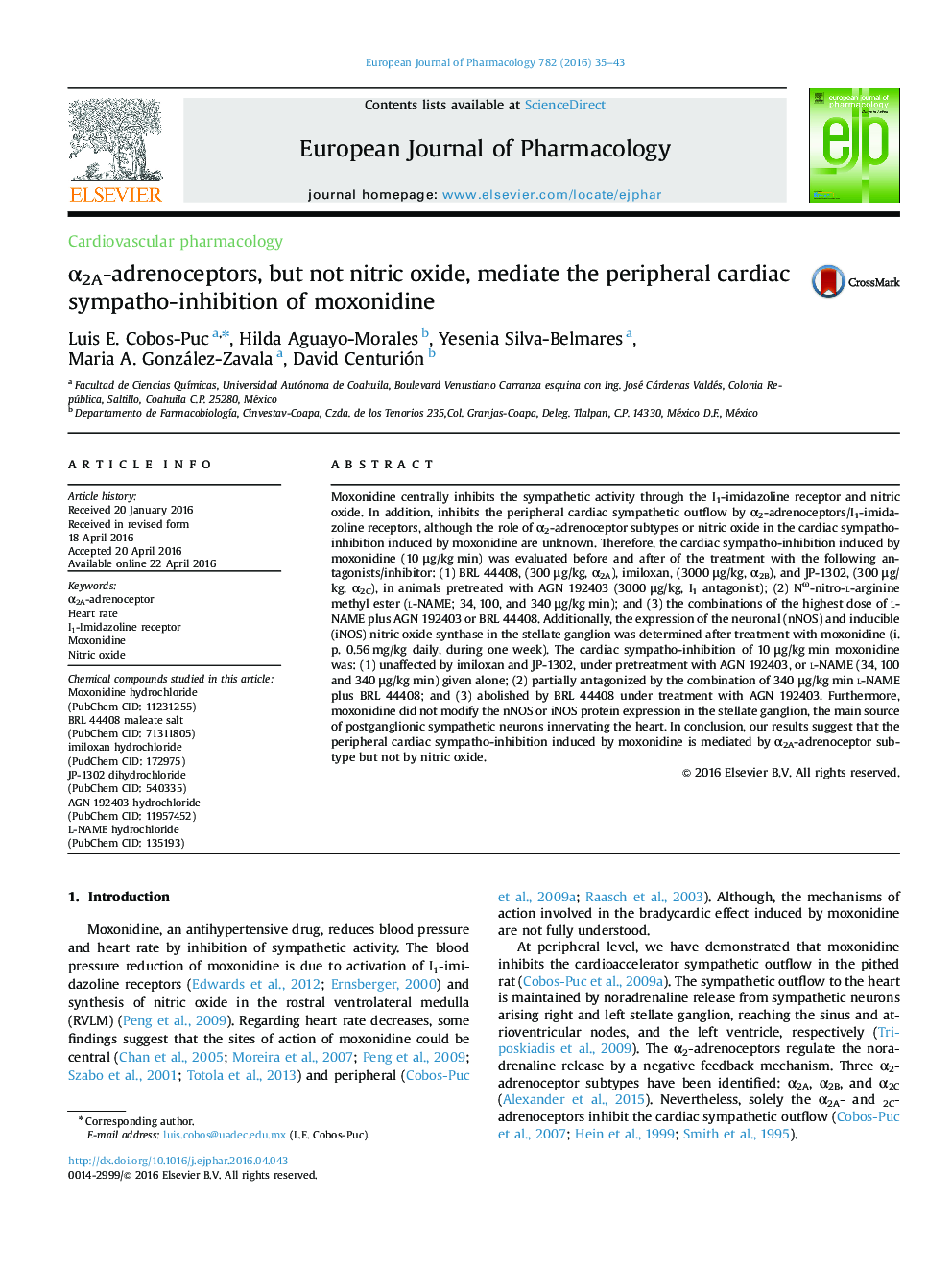| Article ID | Journal | Published Year | Pages | File Type |
|---|---|---|---|---|
| 5826758 | European Journal of Pharmacology | 2016 | 9 Pages |
Abstract
Moxonidine centrally inhibits the sympathetic activity through the I1-imidazoline receptor and nitric oxide. In addition, inhibits the peripheral cardiac sympathetic outflow by α2-adrenoceptors/I1-imidazoline receptors, although the role of α2-adrenoceptor subtypes or nitric oxide in the cardiac sympatho-inhibition induced by moxonidine are unknown. Therefore, the cardiac sympatho-inhibition induced by moxonidine (10 μg/kg min) was evaluated before and after of the treatment with the following antagonists/inhibitor: (1) BRL 44408, (300 μg/kg, α2A), imiloxan, (3000 μg/kg, α2B), and JP-1302, (300 μg/kg, α2C), in animals pretreated with AGN 192403 (3000 μg/kg, I1 antagonist); (2) NÏ-nitro-l-arginine methyl ester (l-NAME; 34, 100, and 340 μg/kg min); and (3) the combinations of the highest dose of l-NAME plus AGN 192403 or BRL 44408. Additionally, the expression of the neuronal (nNOS) and inducible (iNOS) nitric oxide synthase in the stellate ganglion was determined after treatment with moxonidine (i.p. 0.56 mg/kg daily, during one week). The cardiac sympatho-inhibition of 10 μg/kg min moxonidine was: (1) unaffected by imiloxan and JP-1302, under pretreatment with AGN 192403, or l-NAME (34, 100 and 340 μg/kg min) given alone; (2) partially antagonized by the combination of 340 μg/kg min l-NAME plus BRL 44408; and (3) abolished by BRL 44408 under treatment with AGN 192403. Furthermore, moxonidine did not modify the nNOS or iNOS protein expression in the stellate ganglion, the main source of postganglionic sympathetic neurons innervating the heart. In conclusion, our results suggest that the peripheral cardiac sympatho-inhibition induced by moxonidine is mediated by α2A-adrenoceptor subtype but not by nitric oxide.
Related Topics
Life Sciences
Neuroscience
Cellular and Molecular Neuroscience
Authors
Luis E. Cobos-Puc, Hilda Aguayo-Morales, Yesenia Silva-Belmares, Maria A. González-Zavala, David Centurión,
